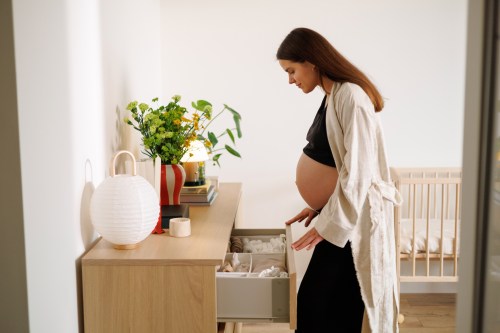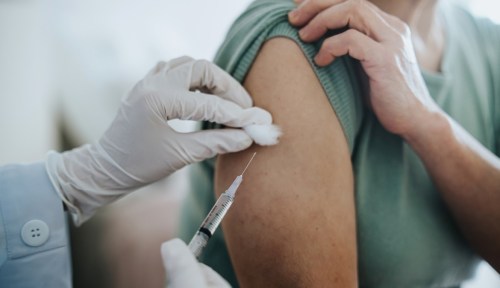Purely speculating here, but there are probably few things more annoying than being surprised by your period while wearing white pants—except, of course, being surprised by blood clots during your period…while also wearing white pants.
There’s no pleasant way to describe these period blood clots, so I’m just going to be blunt: They’re those jelly-like, red or black clumps in your period blood that are usually most noticeable during the first few days of your cycle. But why do we get blood clots during our periods and should we be worried about them?
Although they can be a little disarming when they first appear, period blood clots are pretty normal. “[Menstrual] blood clots are just a mix of various kinds of tissue products,” explains Adeeti Gupta, MD, founder of Walk In GYN Care in New York City. “They contain coagulated blood, some other dead cells, fibroid tissue, and the lining of the uterus.”
When a person bleeds from any part of their body, proteins and platelets in their blood combine to form clots to help slow or stop the bleeding. The same compounds are present in your menstrual blood, although your body usually produces natural enzymes that keep that blood in a liquid state. But when your flow is particularly heavy, those enzymes may not be able to keep up and clots can form.
In most cases, blood clots during your period are NBD—for instance, if they’re small and consistent from month to month. But if you’re noticing clots that are larger than a quarter, or a noticeable increase in clotting or blood flow from previous cycles, Dr. Gupta says you should see a doctor. “If there is associated dizziness or weakness, go to urgent care or your OB/GYN,” she adds.
What are the causes of large blood clots during a period?
There are a few reasons why people might experience abnormal blood clots during menstruation—most of which are also connected with heavy periods. Here are a few of the most common:
1. Endometriosis: This is a condition in which the uterine lining, or endometrium, grows outside of the uterus. It’s likely caused by genetics and can cause heavy, extremely painful bleeding during your period—and whenever bleeding is heavy, there’s potential for clots to form.
2. Uterine fibroids and polyps: Fibroids are muscular tissue growths in the uterine wall, while polyps are growths made up of the uterine lining. Both of these are generally benign, but they can cause periods to be heavier than normal and may result in clotting.
3. Adenomyosis: If the uterine lining grows into the inner layers of the uterine wall, it’s called adenomyosis—a painful condition that can cause an enlarged uterus, heavy bleeding, and blood clots.
4. Hormone imbalance: When a person’s reproductive hormone levels are too high or low—due to menopause and perimenopause, thyroid disease, or external factors like stress or diet—it can cause heavier flow and, perhaps, blood clots during your period.
5. Miscarriage: If you have abnormally heavy bleeding with large blood clots at any time of the month, it could be a sign of a miscarriage—even if you don’t realize you’re pregnant. If you are pregnant and this occurs, call your doctor ASAP.
How to deal with heavy bleeding—and blood clots—at that time of the month
There’s not much that can be done to treat the blood clots themselves, but doctors have a few tactics for reducing the heavy bleeding that causes them.
In some cases, oral contraceptives or intrauterine devices (IUDs)can lead to lighter periods, especially if the cause of the heavy bleeding is hormonal in nature. For severe cases of fibroids, polyps, or endometriosis, some doctors recommend surgically removing the excess tissue. For more run-of-the-mill heavy periods, the Cleveland Clinic recommends taking ibuprofin to help reduce pain and bleeding. Your doctor may also test you for anemia, or iron deficiency, if you’re bleeding a lot during your period and experiencing symptoms like fatigue, pale skin, or dizziness. Eating more iron-rich foods or taking an iron supplement can help get your iron levels back where they need to be.
“It all depends on what the reason [for the clotting] is,” says Dr. Gupta. “Your doctor will be able to help.” And if your doc determines your menstrual clots aren’t worrisome, you can turn your attention to other things—like shopping for period-proof workout shorts, for starters.
Find out what the color of your menstrual blood says about your health—and then learn how to deal with “back cramps” during that time of the month.
Sign Up for Our Daily Newsletter
Get all the latest in wellness, trends, food, fitness, beauty, and more delivered right to your inbox.
Got it, you've been added to our email list.











